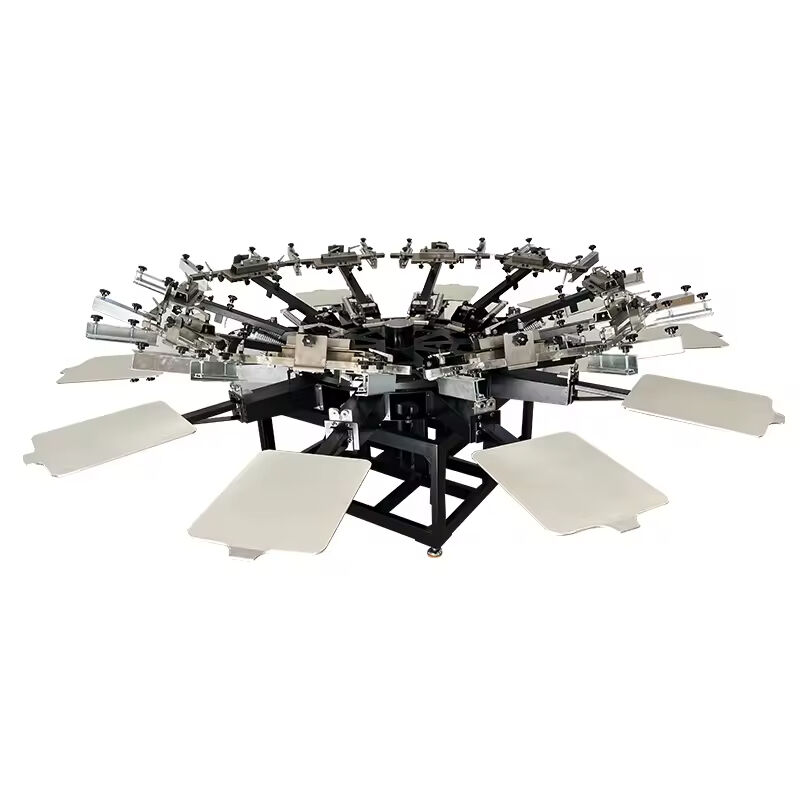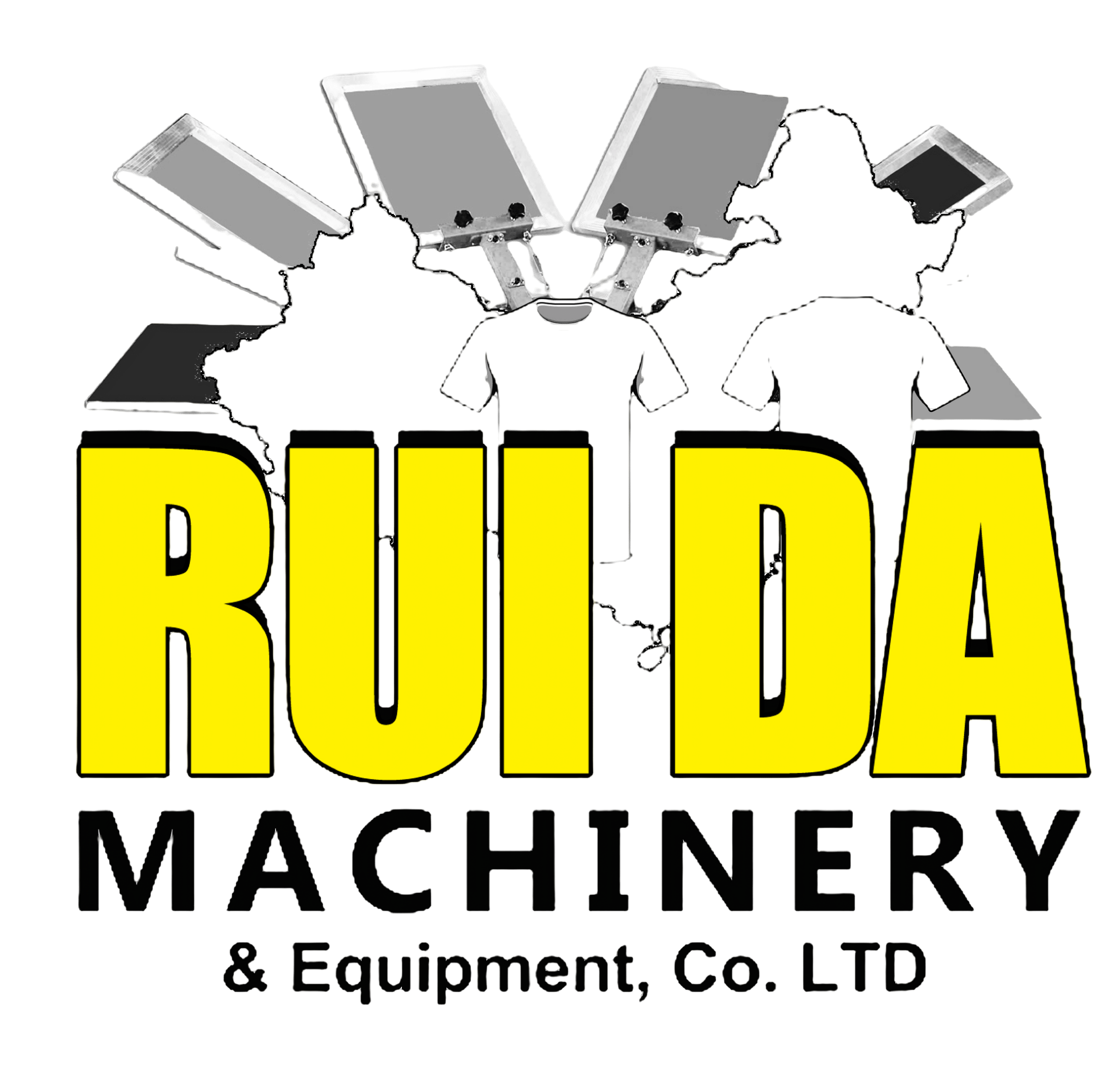تطور معدات الطباعة الحريرية الحديثة
عالم الطباعة الحريرية مّرت بتحولات ملحوظة، حيث دفعت التطورات التكنولوجية حدود ما يمكن تحقيقه في مجال الطباعة على الشاشة. تجمع آلات الطباعة الحريرية الحديثة بين الدقة الهندسية والمزايا المبتكرة لتوفير نتائج استثنائية لكل من الاستخدامات التجارية والفنية. ومع اقترابنا من عام 2025، يشهد السوق توفر معدات متطورة تلبي مختلف أحجام الإنتاج والمتطلبات الخاصة.
يُشاهد مُحترفو الطباعة والفنانون على حدٍ سواء نهضةً في تكنولوجيا الطباعة الحريرية، حيث تلتقي التقنيات التقليدية بالتحديثات التلقائية المتطورة. لا تُحسّن هذه الآلات الحديثة من العملية فحسب، بل تحافظ أيضًا على النزاهة الفنية التي تجعل الطباعة الحريرية الطريقة المُفضّلة للحصول على طباعات عالية الجودة.

الميزات الأساسية لمعدات الطباعة الحريرية الاحترافية
أنظمة تسجيل متقدمة
تتميّز آلات الطباعة الحريرية الحديثة بدقة عالية في إتمام المحاذاة. تحتوي أحدث الموديلات على ضوابط دقيقة للتسجيل تسمح بفصل الألوان ومحاذاة الطبقات بشكل مثالي. وعادةً ما تحتوي هذه الأنظمة على شاشات رقمية وأدوات تحكم ميكرومترية، مما يمكّن المشغلين من تحقيق دقة في المحاذاة تصل إلى جزء من الملليمتر.
تشمل أحدث الآلات الآن التحقق التلقائي من التسجيل من خلال أجهزة استشعار ضوئية وأدوات محاذاة مساعدة بالكمبيوتر. تقلل هذه التقنية بشكل كبير من وقت الإعداد وتحارب بشكل فعال أخطاء التسجيل، مما يضمن جودة متسقة عبر دفعات الإنتاج الكبيرة.
تكنولوجيا رأس الطباعة المبتكرة
يتمثل محور أي آلة طباعة سيرجرافيا في تصميم رأس الطباعة. تحتوي الموديلات الحديثة على أنظمة مكشطة محسنة مع تحكم قابل للتعديل في الضغط وإعدادات الزاوية. تسمح هذه التحسينات بنقل الحبر وتغطيته بشكل مثالي على مختلف مواد الركيزة.
تشمل الآلات المتطورة الآن رؤوس طباعة مُحكمة بمحركات سيرفو تحافظ على ضغط وسرعة متسقة طوال عملية الطباعة. تضمن هذه التقنية إيداعًا موحدًا للحبر وتحارب مشاكل شائعة مثل التظليل أو عدم اكتمال التغطية.
أنظمة السيرجرافيا الأوتوماتيكية المتطورة
حلول إنتاج على نطاق صناعي
تمثل ماكينات الطباعة بالشاشة الحريرية الأوتوماتيكية بتنسيق كبير ذروة القدرة الإنتاجية. يمكن لهذه الأنظمة التعامل مع مواد تصل إلى 6 أقدام في العرض وتتميز بمحطات طباعة متعددة لتصميمات ملونة معقدة. تحتوي أحدث الموديلات على واجهات شاشة تعمل باللمس وقدرات على المراقبة عن بُعد، مما يسمح للمشغلين بإدارة جوانب متعددة من عملية الطباعة في وقت واحد.
تشمل الميزات المتقدمة للأنظمة الأوتوماتيكية أنظمة تنظيف الشاشة تلقائيًا والمجففات المتكاملة واليات متقدمة لمعالجة المواد. تعمل هذه المكونات معًا للحفاظ على سرعات إنتاج عالية مع ضمان جودة الطباعة المتسقة.
معدات مهنية متوسطة المدى
تقدم آلات الطباعة السيرجرافية متعددة الاستخدامات توازنًا مثاليًا بين الأتمتة والتحكم لمحلات الطباعة متوسطة الحجم. تحتوي هذه الأنظمة عادةً على 4 إلى 8 محطات للألوان ويمكنها استيعاب أحجام مختلفة من الركائز. تشتمل المعدات الحديثة من الفئة المتوسطة على تسلسلات طباعة قابلة للبرمجة ووظائف لحفظ المهام لتسهيل الإعداد السريع للمشاريع المتكررة.
غالبًا ما تحتوي هذه الآلات على أنظمة تجفيف فعالة من حيث استهلاك الطاقة وعناصر تصميم معيارية تسمح بالترقيات أو التعديلات المستقبلية مع تطور احتياجات العمل.
حلول سيرجرافية متخصصة
أنظمة الطباعة الخاصة بالمنسوجات
يتطلب قطاع طباعة المنسوجات آلات طباعة سيرجرافية متخصصة صُمّمت خصيصًا للتعامل مع ركائز الأقمشة. تحتوي الطرازات الحديثة من الطابعات على تصميمات محسّنة للأسطح المسطحة مزوّدة بنظام شفط للحفاظ على توتر الأقمشة ومنع انزلاقها أثناء الطباعة. كما تحتوي النماذج المتطورة على محطات مدمجة للاستعداد المسبق ووحدات تجفيف سريع لضمان نتائج مثلى على مختلف أنواع الأقمشة.
تشمل التطورات المبتكرة في طباعة الشاشة النسيجية تحسينات في توافق الأحبار القائمة على الماء وأنظمة مراقبة متخصصة لتوتر الشاشة تضمن جودة طباعة متسقة حتى أثناء فترات الإنتاج الطويلة.
الفنون الجميلة وطابعات الإصدار المحدود
يحتاج فنانون وصانعو الطباعة من الفنون الجميلة إلى آلات طباعة سيريجرافيا تركز على الدقة والمرونة بدلاً من سرعة الإنتاج. تحتوي هذه الأنظمة المتخصصة في كثير من الأحيان على آليات تحكم متقدمة في الحبر وضوابط دقيقة للضغط لتحقيق التأثيرات الفنية الدقيقة.
تشمل معدات السيريجرافيا الحديثة لنفس الغرض أنظمة تسجيل متقدمة لإنشاء طباعات إصدار محدود بثبات تام. تحتوي هذه الآلات في كثير من الأحيان على معايير طباعة قابلة للتخصيص لتلبية التقنيات التجريبية والمواد غير التقليدية.
الاعتبارات البيئية والكفاءة
حلول طباعة مستدامة
ت increasingly incorporate خصائص صديقة للبيئة في آلات الطباعة السيرجرافية الحديثة. وتشمل هذه تقليل استهلاك الطاقة من خلال أنظمة محركات فعالة وإدارة ذكية للطاقة. تحتوي الآلات المتقدمة على أنظمة إعادة تدوير حبر مغلقة الحلقة وإنتاج نفايات محدودة للغاية من خلال آليات توصيل الحبر الدقيقة.
يعمل المصنعون على تطوير تقنيات جديدة تدعم استخدام الأحبار القائمة على الماء والأحبار الصديقة للبيئة، مما يقلل من التأثير البيئي مع الحفاظ على جودة الطباعة. وغالبًا ما تشمل هذه الأنظمة أنظمة ترشيح وتهوية متقدمة لإدارة الانبعاثات والحفاظ على سلامة مكان العمل.
ابتكارات في كفاءة الإنتاج
تركز معدات الطباعة السيرجرافية الحديثة على الكفاءة التشغيلية من خلال حلول متكاملة للتدفق. تقوم خوارزميات الذكاء الاصطناعي الذكية بتحسين معايير الطباعة استنادًا إلى البيانات التاريخية، في حين تساعد أنظمة الصيانة التنبؤية في منع توقف المعدات المفاجئ.
توفر أدوات المراقبة المتقدمة للإنتاج تحليلات في الوقت الفعلي حول أداء الآلات، واستخدام المواد، ومعايير الجودة. تساعد هذه الميزات المشغلين على الحفاظ على الكفاءة القصوى مع تقليل الهدر والتكاليف التشغيلية.
الأسئلة الشائعة
ما الذي يجب أن أأخذه في الاعتبار عند اختيار ماكينة طباعة سيرغرافيا؟
قم بمراعاة متطلباتك من حيث حجم الإنتاج، المساحة المتاحة، أنواع المواد التي ستقوم بالطباعة عليها، والقدرات المطلوبة للألوان. قم أيضًا بتقييم مستوى الأتمتة المطلوب، متطلبات الصيانة، والقدرة على التوسع في المستقبل. يجب أن تشمل الاعتبارات المتعلقة بالميزانية ليس فقط السعر الأولي للشراء ولكن أيضًا التكاليف التشغيلية المستمرة.
كيف تقارن بين ماكينات السيرغرافيا الأوتوماتيكية واليدوية؟
تتميز آلات الطباعة الحريرية الأوتوماتيكية بسرعات إنتاج أعلى وثبات أعلى، لكنها تتطلب استثمارات أكبر ومساحة أكبر. أما الآلات اليدوية، فتتميز بتحكم مباشر أكبر، وهي مناسبة أكثر للكميات الصغيرة من الطباعة أو التطبيقات الفنية. يعتمد الاختيار على احتياجاتك الإنتاجية ونموذج عملك.
ما هي متطلبات صيانة معدات الطباعة الشاشية الحديثة؟
تشمل الصيانة الدورية تنظيف الشاشات ورؤوس الطباعة، والتحقق من أنظمة التسجيل وضبطها، وتزييت الأجزاء المتحركة، ومعايرة المكونات الإلكترونية. كما تحتوي الآلات الحديثة في كثير من الأحيان على أنظمة تشخيص ذاتي تنبه المشغلين إلى مهام الصيانة المطلوبة والمشكلات المحتملة قبل أن تؤدي إلى تعطيل الإنتاج.
كيف يمكنني زيادة عمر آلة الطباعة الشاشية؟
قم بتطبيق جدول صيانة دوري، وتدريب المشغلين بشكل صحيح، واستخدام مواد ومعدات ذات جودة عالية، والالتزام بإرشادات المصنّع الخاصة بالتشغيل والصيانة. واحتفظ بسجلات صيانة مفصّلة وتعامل مع أي مشكلات بشكل فوري لمنع تطوّر مشكلات أكبر.

